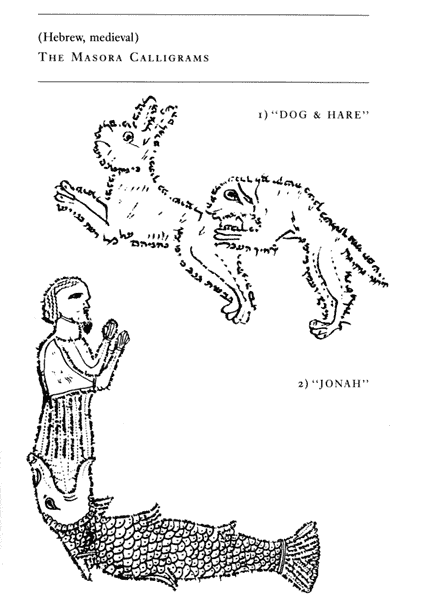 ethnopoetics visual ethnopoetics visual
 ethnopoetics main ethnopoetics main
 ubuweb ubuweb
|
--> next image

MASORA CALLIGRAMS Words drawn into visual images have a near universal distribution among cultures that practice writing. In Apollinaire’s Calligrammes (circa 1914), the mode was revived -- & re-shaped, smashed open — with the claim, e.g. in his "horse calligram": "You will find here a new representation of the universe. The most poetic and the most modern." The masora "calligrams" occur here & there in traditional annotated copies of the Hebrew Bible. Writes Berjouhi Bowler in The Word As Image: "In some Hebrew manuscripts the massorah, which is the critical emendation found [as marginalia] on certain pages of the Bible, ceases to be the usual three lines, in miniscule letters, surrounding the biblical text. Unexpectedly … the massorah is shaped into patterns which generally have no particular relevance to the biblical passage or to the emendations and alternative readings [that make up their text]. The strange intrusions can appear either as a full page decoration … or in corners of the page. There is no apparent reason for their appearance." Drawn typically as marginalia, the calligrams reproduced here are examples as well of minute (micrographic) writing & are shown at many times their size. Images and commentary from Jerome Rothenberg, Exiled in the Word (a.k.a. A Big Jewish Book). All images in this section from Exiled in the Word (a.k.a. A Big Jewish Book), Edited by Jerome Rothenberg with Harris Lenowitz and with Charles Doria, Anchor Press / Doubleday, 1978.--> next image |